A Novel Method for Traffic Estimation and Air Quality Assessment in California
Abstract
:1. Introduction
2. Data
2.1. Traffic Data
2.2. Air Pollutant Data
3. Methodology
3.1. Traffic Variables
3.2. Data Analysis
- Average traffic volume of each EPA site;
- Time series of the average traffic volumes of EPA sites in metropolitan areas;
- Differences in the average traffic volume, NO2, and CO between 2020 and 2021;
- Correlation between the traffic volume and NO2/CO.
- First period: 6 January 2020 to 19 March 2020;
- Second period: 6 January 2021 to 19 March 2021;
- All periods: 6 January 2020 to 31 December 2021.
4. Results
4.1. Traffic Volume
4.2. Traffic Volume and Air Pollution
5. Conclusions
Author Contributions
Funding
Institutional Review Board Statement
Informed Consent Statement
Data Availability Statement
Conflicts of Interest
References
- Vette, A.; Burke, J.; Norris, G.; Landis, M.; Batterman, S.; Breen, M.; Isakov, V.; Lewis, T.; Gilmour, M.I.; Kamal, A.; et al. The near-road exposures and effects of urban air pollutants study (NEXUS): Study design and methods. Sci. Total Environ. 2013, 448, 38–47. [Google Scholar] [CrossRef] [PubMed] [Green Version]
- Karagulian, F.; Belis, C.A.; Dora, C.F.C.; Prüss-Ustün, A.M.; Bonjour, S.; Adair-Rohani, H.; Amann, M. Contributions to cities’ ambient particulate matter (PM): A systematic review of local source contributions at global level. Atmos. Environ. 2015, 120, 475–483. [Google Scholar] [CrossRef]
- Khan, N.U.; Shah, M.A.; Maple, C.; Ahmed, E.; Asghar, N. Traffic flow prediction: An intelligent scheme for forecasting traffic flow using air pollution data in smart cities with bagging ensemble. Sustainability 2022, 14, 4164. [Google Scholar] [CrossRef]
- An, S.; Ma, L.; Wang, J. Optimization of traffic detector layout based on complex network theory. Sustainability 2020, 12, 2048. [Google Scholar] [CrossRef] [Green Version]
- Kinney, P.L.; Gichuru, M.G.; Volavka-Close, N.; Ngo, N.; Ndiba, P.K.; Law, A.; Gachanja, A.; Gaita, S.M.; Chillrud, S.N.; Sclar, E. Traffic impacts on PM2.5 air quality in Nairobi, Kenya. Environ. Sci. Policy 2011, 14, 369–378. [Google Scholar] [CrossRef] [Green Version]
- Mani, S.; Mani, F.S.; Kumar, A.; Shah, S.; Peltier, R. Traffic related PM2.5 air quality: Policy options for developing Pacific Island countries. Transp. Res. Part D Transp. Environ. 2020, 87, 102519. [Google Scholar] [CrossRef]
- The Contribution of the Transport Sector to Total Emissions of the Main Air Pollutants. Available online: https://www.eea.europa.eu/data-and-maps/daviz/contribution-of-the-transport-sector-6#tab-chart_4 (accessed on 3 May 2022).
- Batterman, S. Temporal and spatial variation in allocating annual traffic activity across an urban region and implications for air quality assessments. Transp. Res. Part D Transp. Environ. 2015, 41, 401–415. [Google Scholar] [CrossRef] [Green Version]
- Zhang, Y.; Lv, J.; Ying, Q. Traffic assignment considering air quality. Transp. Res. Part D Transp. Environ. 2010, 15, 497–502. [Google Scholar] [CrossRef]
- Wu, Y.J.; Yin, Z.; Yang, S.; Jiang, W. Freeway Travel Time Estimation Using Existing Fixed Traffic Sensors-Phase 2; Technical Report; University of Arizona, Department of Civil Engineering and Engineering Mechanics: Tucson, AZ, USA; Missouri University of Science and Technology, Department of Computer Science: Rolla, MO, USA, 2015. [Google Scholar]
- Turner, S. Defining and Measuring Traffic Data Quality; Technical Report; Texas Transportation Institute: College Station, TX, USA, 2015.
- Vlahogianni, E.I.; Golias, J.C.; Ziomas, I.C. Traffic flow evolution effects to nitrogen dioxides predictability in large metropolitan areas. Transp. Res. Part D Transp. Environ. 2011, 16, 273–280. [Google Scholar] [CrossRef]
- Zalakeviciute, R.; Bastidas, M.; Buenaño, A.; Rybarczyk, Y. A traffic-based method to predict and map urban air quality. Appl. Sci. 2020, 10, 2035. [Google Scholar] [CrossRef] [Green Version]
- Alexandrino, K.; Zalakeviciute, R.; Viteri, F. Seasonal variation of the criteria air pollutants concentration in an urban area of a high-altitude city. Int. J. Environ. Sci. Technol. 2021, 18, 1167–1180. [Google Scholar] [CrossRef]
- Qu, W.; Li, J.; Yang, L.; Li, D.; Liu, S.; Zhao, Q.; Qi, Y. Short-term intersection traffic flow forecasting. Sustainability 2020, 12, 8158. [Google Scholar] [CrossRef]
- Lee, M.; Finerman, R. COVID-19, commuting flows, and air quality. J. Asian Econ. 2021, 77, 101374. [Google Scholar] [CrossRef] [PubMed]
- Parker, H.; Hasheminassab, S.; Crounse, J.; Roehl, C.; Wennberg, P. Impacts of traffic reductions associated with COVID-19 on southern California air quality. Geophys. Res. Lett. 2020, 47, e2020GL090164. [Google Scholar] [CrossRef] [PubMed]
- Huang, X.; Ding, A.; Gao, J.; Zheng, B.; Zhou, D.; Qi, X.; Tang, R.; Wang, J.; Ren, C.; Nie, W.; et al. Enhanced secondary pollution offset reduction of primary emissions during COVID-19 lockdown in China. Natl. Sci. Rev. 2021, 8, nwaa137. [Google Scholar] [CrossRef] [PubMed]
- Bauwens, M.; Compernolle, S.; Stavrakou, T.; Müller, J.F.; Van Gent, J.; Eskes, H.; Levelt, P.F.; Van Der, A.R.; Veefkind, J.; Vlietinck, J.; et al. Impact of coronavirus outbreak on NO2 pollution assessed using TROPOMI and OMI observations. Geophys. Res. Lett. 2020, 47, e2020GL087978. [Google Scholar] [CrossRef] [PubMed]
- Le Quéré, C.; Jackson, R.B.; Jones, M.W.; Smith, A.J.; Abernethy, S.; Andrew, R.M.; De-Gol, A.J.; Willis, D.R.; Shan, Y.; Canadell, J.G.; et al. Temporary reduction in daily global CO2 emissions during the COVID-19 forced confinement. Nat. Clim. Chang. 2020, 10, 647–653. [Google Scholar] [CrossRef]
- Pan, S.; Jung, J.; Li, Z.; Hou, X.; Roy, A.; Choi, Y.; Gao, H.O. Air quality implications of COVID-19 in California. Sustainability 2020, 12, 7067. [Google Scholar] [CrossRef]
- Heintzelman, A.; Filippelli, G.; Lulla, V. Substantial Decreases in U.S. Cities’ Ground-Based NO2 Concentrations during COVID-19 from Reduced Transportation. Sustainability 2021, 13, 9030. [Google Scholar] [CrossRef]
- Governor Gavin Newsom Issues Stay at Home Order. Available online: https://www.gov.ca.gov/2020/03/19/governor-gavin-newsom-issues-stay-at-home-order (accessed on 20 May 2022).
- Raju, A.S.; Wallerstein, B.R.; Johnson, K.C. Achieving NOx and Greenhouse gas emissions goals in California’s Heavy-Duty transportation sector. Transp. Res. Part D Transp. Environ. 2021, 97, 102881. [Google Scholar] [CrossRef]
- A Timeline of California in the Coronavirus Pandemic. Available online: https://www.abc10.com/article/news/health/coronavirus/covid-19-timeline-pandemic/103-03046184-ed02-498b-b6d0-795a60646c6b (accessed on 20 May 2022).
- Sorensen, P. Moving Los Angeles. ACCESS Mag. 2009, 1, 16–24. [Google Scholar]
- Shilling, F.; Waetjen, D. Special Report: Impact of COVID19 on California Traffic Accidents; National Academy of Sciences: Washington, DC, USA, 2020. [Google Scholar]
- van der A, R.J.; Eskes, H.J.; Boersma, K.F.; van Noije, T.P.C.; Van Roozendael, M.; De Smedt, I.; Peters, D.H.M.U.; Meijer, E.W. Trends, seasonal variability and dominant NOx source derived from a ten year record of NO2 measured from space. J. Geophys. Res. Atmos. 2008, 113, 1–12. [Google Scholar] [CrossRef]
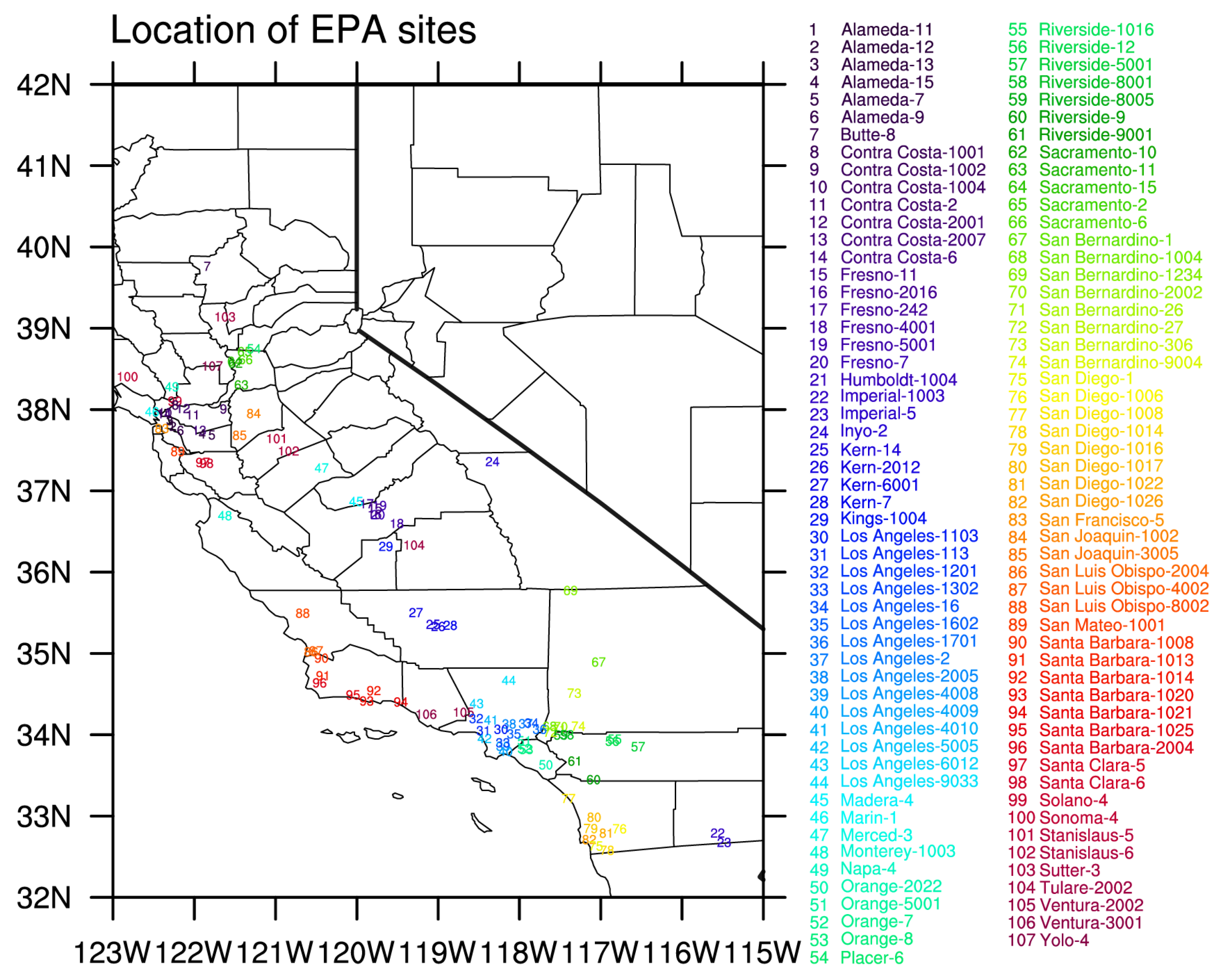
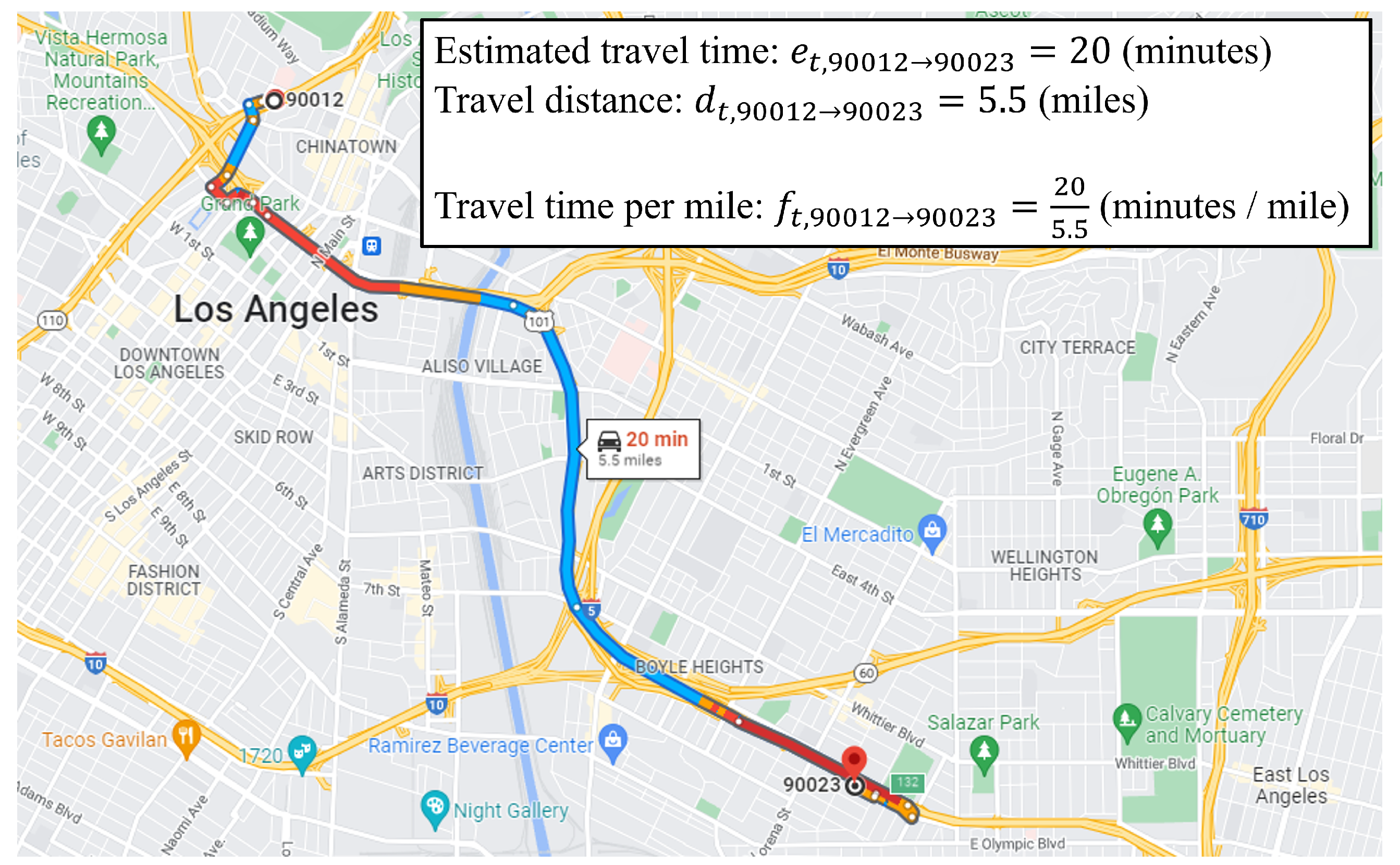
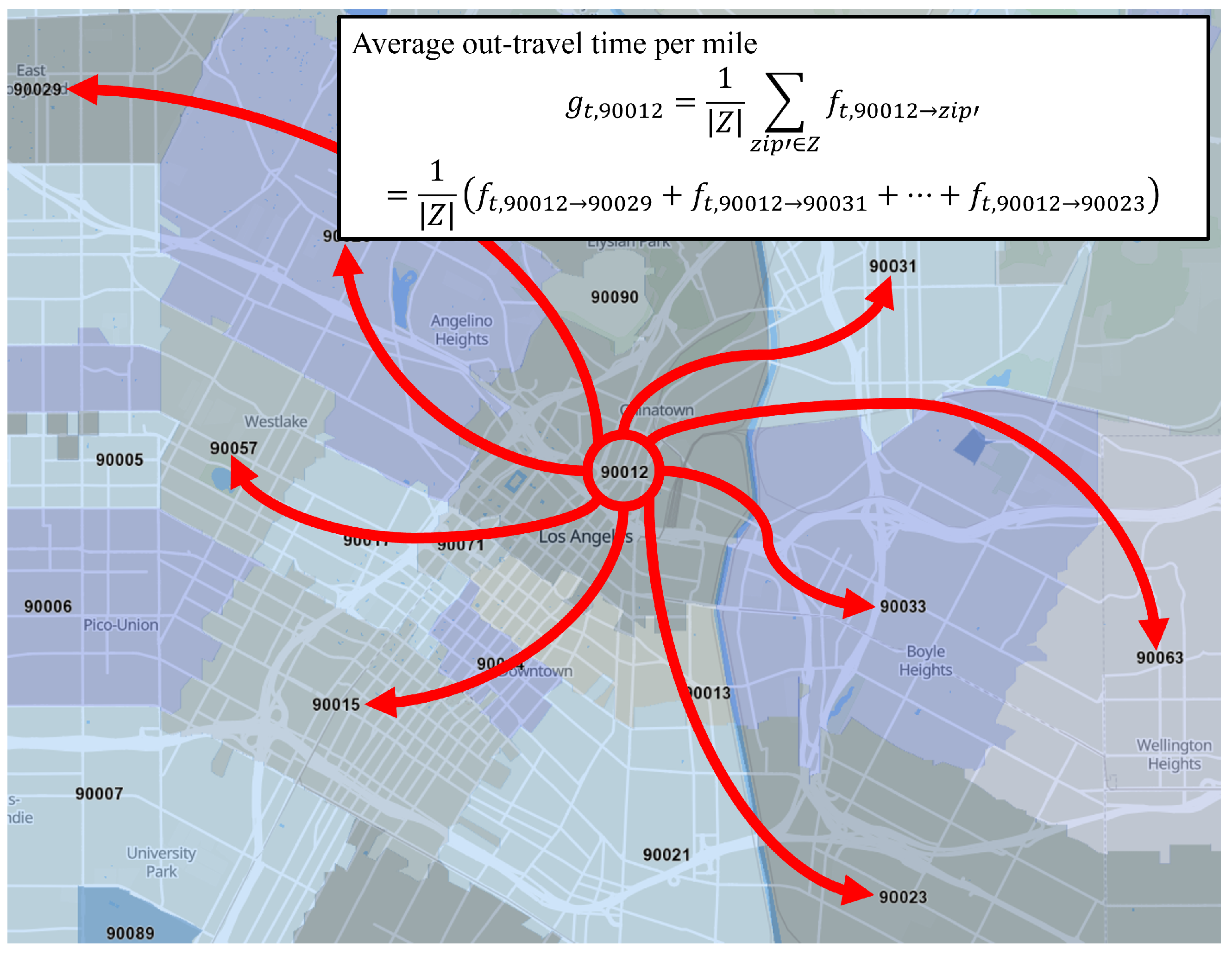
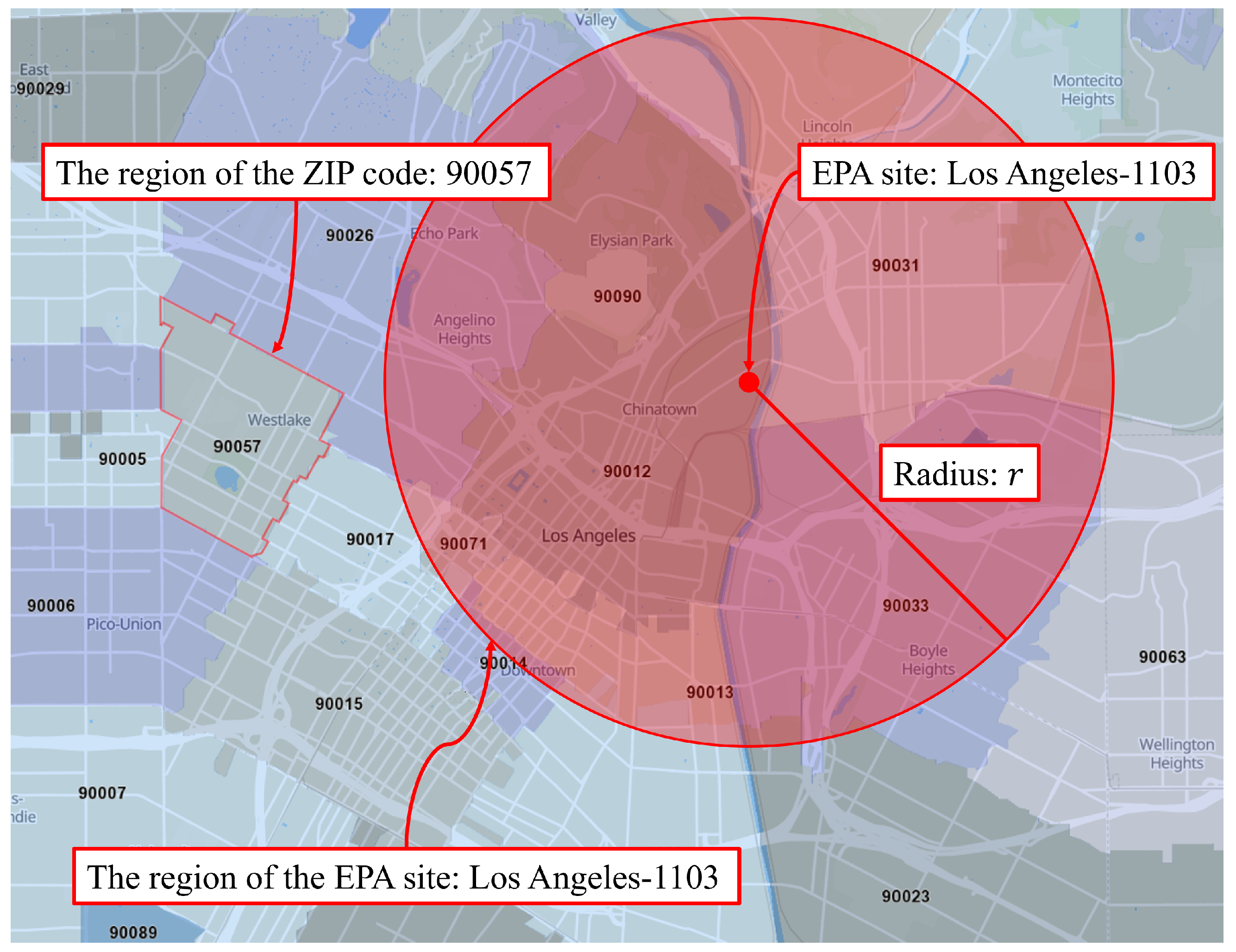


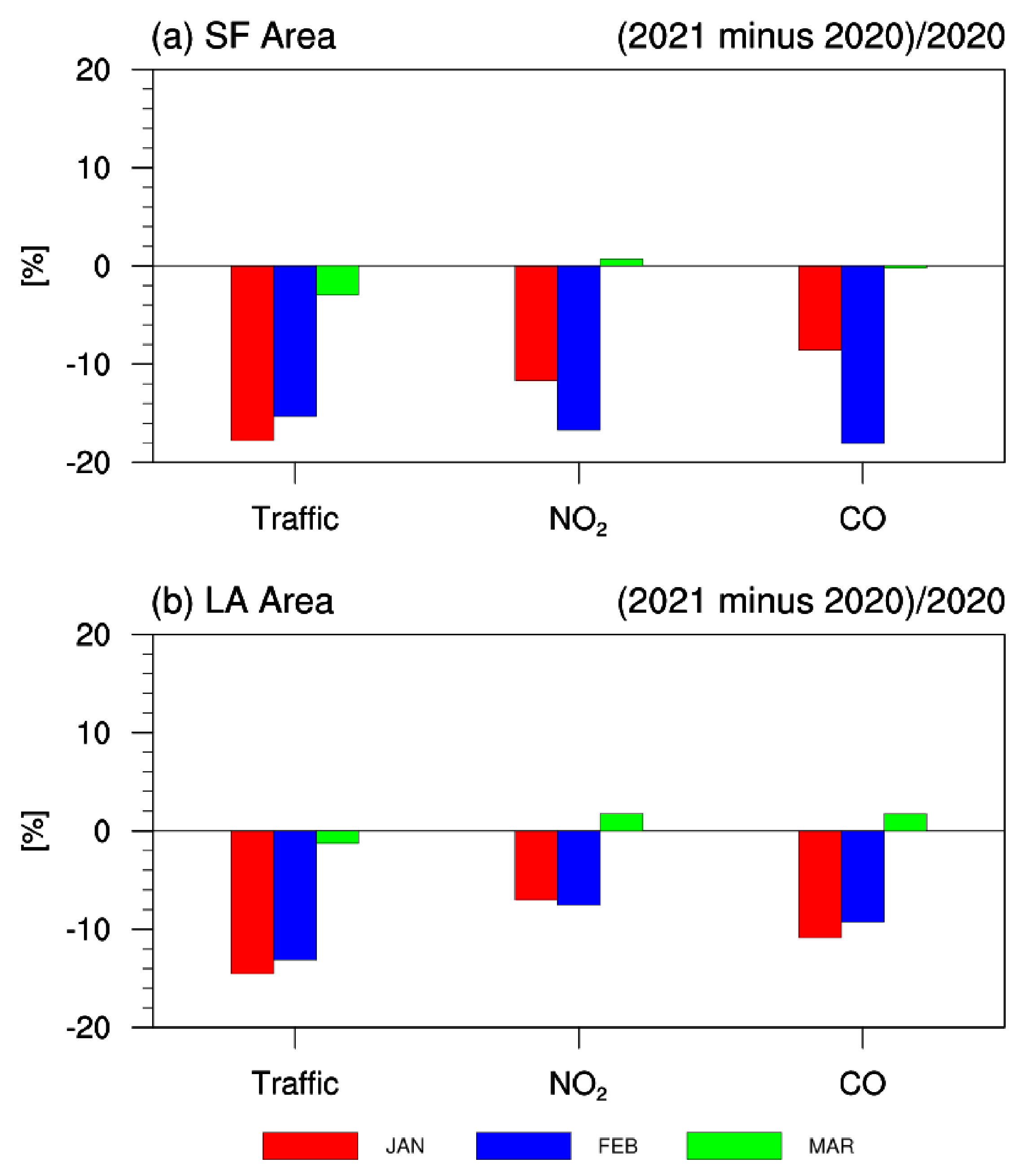

Publisher’s Note: MDPI stays neutral with regard to jurisdictional claims in published maps and institutional affiliations. |
© 2022 by the authors. Licensee MDPI, Basel, Switzerland. This article is an open access article distributed under the terms and conditions of the Creative Commons Attribution (CC BY) license (https://creativecommons.org/licenses/by/4.0/).
Share and Cite
Moon, J.; Hong, J.G.; Park, T.-W. A Novel Method for Traffic Estimation and Air Quality Assessment in California. Sustainability 2022, 14, 9169. https://doi.org/10.3390/su14159169
Moon J, Hong JG, Park T-W. A Novel Method for Traffic Estimation and Air Quality Assessment in California. Sustainability. 2022; 14(15):9169. https://doi.org/10.3390/su14159169
Chicago/Turabian StyleMoon, Jucheol, Jin Gi Hong, and Tae-Won Park. 2022. "A Novel Method for Traffic Estimation and Air Quality Assessment in California" Sustainability 14, no. 15: 9169. https://doi.org/10.3390/su14159169
APA StyleMoon, J., Hong, J. G., & Park, T.-W. (2022). A Novel Method for Traffic Estimation and Air Quality Assessment in California. Sustainability, 14(15), 9169. https://doi.org/10.3390/su14159169





